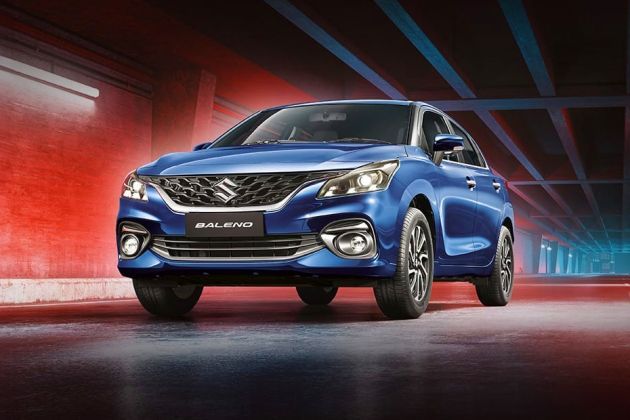Car Sales in India: January and February 2025 – A Detailed Analysis
The Indian automotive market in 2025 has kicked off with intriguing trends, reflecting a mix of resilience, competition, and shifting consumer preferences. January and February sales figures provide a glimpse into how major brands are performing in one of the world’s largest automobile markets. This blog dives into the detailed car sales data for these two months, analyzing which brands succeeded, where they excelled, and what factors contributed to their performance.

- Maruti Suzuki: Leading the pack, Maruti Suzuki reported its highest-ever January sales at approximately 1.73–1.74 lakh units, a 4.4% YoY increase from 1.66 lakh units in January 2024. The brand’s dominance in the hatchback and compact SUV segments, with models like the Swift (16,000+ units), Wagon R (19,000+ units), and Fronx (20,000+ units), solidified its position. Maruti’s success lies in its vast dealership network, affordable pricing, and fuel-efficient offerings, including CNG variants, which resonate with urban and semi-urban buyers.
- Mahindra & Mahindra: Mahindra hit a milestone by crossing 50,000 units (50,659 units), a 12.2% YoY growth from 45,137 units in January 2024. The SUV-only strategy paid off, with the Scorpio twins, Thar Roxx, and XUV 3XO driving volumes. Mahindra excels in the mid-size SUV segment, appealing to buyers seeking rugged, feature-packed vehicles, and its EV launches (BE 6 and XEV 9e) have begun gaining traction.
- Hyundai Motor India: Hyundai dispatched 54,003 units, down 5% YoY from 57,115 units in January 2024. Despite the decline, the Creta remained a bestseller in the mid-size SUV category (15,000+ units), while the Venue and Exter bolstered its compact SUV portfolio. Hyundai’s strength lies in its premium features and urban appeal, though it faced stiff competition from Mahindra and Tata.
- Tata Motors: Tata sold 48,076 units, a 7.3% YoY decline from 51,867 units in January 2024. The Nexon (15,000+ units) and Punch continued to lead, but EV sales softened slightly. Tata’s forte remains its safety-focused SUVs and EV leadership (43% market share in EVs), though it struggled to maintain momentum against Mahindra’s surge.
- Toyota Kirloskar Motor: Toyota recorded 26,178 units, a 19% YoY jump from 22,000 units in January 2024. MPVs like the Innova Hycross and SUVs like the Fortuner drove 68% of its sales. Toyota succeeds in the premium utility segment, targeting buyers willing to pay for reliability and resale value.
- Kia India: Kia sold 25,025 units, up marginally YoY. The Seltos and Sonet remained strong, while the new Syros compact SUV hinted at future growth. Kia’s modern design and feature-rich offerings appeal to younger buyers in urban markets.
- Maruti Suzuki: Sales dipped to 1.60–1.99 lakh units (reports vary), with a marginal YoY increase from 1.60 lakh units in February 2024. The Fronx emerged as India’s bestselling car at 21,461 units (51% YoY growth), overtaking the Wagon R (19,879 units) and Swift (16,269 units). Maruti’s ability to blend hatchback reliability with SUV appeal (Fronx, Brezza) kept it ahead, though its market share slipped slightly to 38.94% due to rising competition.
- Mahindra & Mahindra: Mahindra surged to second place with 50,000–83,702 units (data varies), a 13.7–19% YoY rise from 43,987 units in February 2024. Overtaking Hyundai, Mahindra’s SUV lineup—Scorpio, Thar Roxx, and XUV700—excelled in semi-urban and rural markets, where ruggedness and value-for-money are prized. Its EV push also gained momentum.
- Hyundai Motor India: Hyundai slipped to third or fourth place with 47,727–58,727 units, a 4.9% YoY decline from 50,201 units in February 2024. The Creta held strong, but the lack of new launches hurt its momentum. Hyundai’s urban-centric portfolio faced pressure from Mahindra’s rural penetration and Tata’s EV edge.
- Tata Motors: Tata dispatched 46,811–79,344 units (data varies), down 9% YoY from 51,321 units in February 2024. The Nexon (15,349 units) and Punch stayed in the top 10, but EV sales dropped 24% to 3,825 units. Tata’s strength in safety and EVs remains, but it lost ground to Mahindra’s aggressive growth.
- Kia India: Kia posted 25,026 units, a stellar 23.8% YoY increase from 20,200 units in February 2024. The Syros (5,425 units) debuted strongly, complementing the Sonet (7,598 units) and Seltos (6,446 units). Kia thrives in the compact SUV space, appealing to style-conscious urban buyers.
- Toyota Kirloskar Motor: Toyota sold 26,414–28,414 units, up 13% YoY from 25,220 units in February 2024. Its focus on SUVs and MPVs continued to pay off, excelling in the premium segment.
- Maruti Suzuki: Dominates hatchbacks and compact SUVs, excelling in affordability and mass-market appeal across urban and rural India.
- Mahindra: Rules mid-size SUVs and rural markets, leveraging rugged designs and EV innovation.
- Hyundai: Shines in urban mid-size SUVs with premium features, though it’s losing ground.
- Tata Motors: Leads in safety and EVs, appealing to safety-conscious and eco-friendly buyers.
- Kia: Excels in compact SUVs with modern design, targeting young urbanites.
- Toyota: Thrives in premium utility vehicles, focusing on reliability and resale value.
Comments
Post a Comment